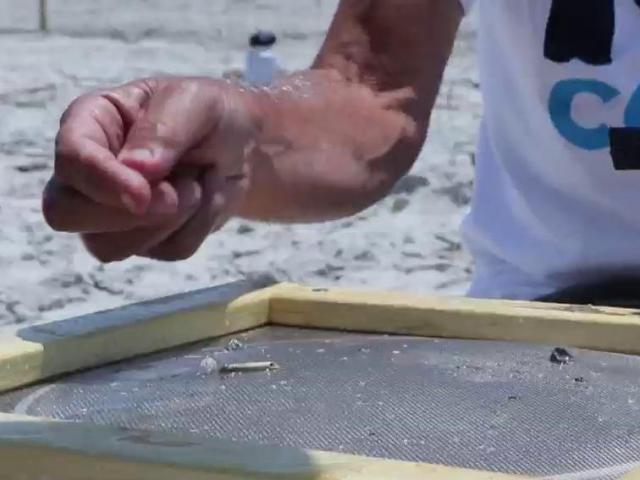
This summer, a group of volunteers spent quite a bit of time out on the beach combing through the sand in search of microplastics.
“The microplastic sampling program we modified from the EPA’s beach plastic sampling protocol and we engaged roughly 30 volunteers that are sampling beaches all the way from North Topsail to Sunset Beach just to take a look at what the microplastic issue might be like,” said coastal specialist Georgia Busch.
The North Carolina Coastal Federation hosted the citizen science program in an effort to better understand what kind of plastic pollution was showing up on the beach.
“Once weekly volunteers would go out to their assigned beach access and use sieves and their buckets and use some of the ocean water and they were looking for microplastics that are 5mm in size or less so the sieve would catch those tiny, tiny microplastics and they would categorize them into five different categories and count them up as part of our greater data collection,” Busch said.
Now that the sampling has wrapped up, organizers said they were surprised by some of the results of the collections.
“A trend I don’t think I expected is that a couple of our volunteers took it upon themselves to sample sound side and intercoastal waters in addition to the beach sand and microplastics were much more heavily accumulated in more of the marsh habitat versus on the beach sand,” Busch said. “But if you think about it, it makes sense because the marsh grasses, the tides, just the way the hydrology works in and out of those ecosystems they’re going to capture and hold onto more of that debris.”
Aside from where more of these tiny plastics were found, there was also a particular type that was found more often.
“One thing we learned during the microplastics sampling is that the small polystyrene or small foam beads are something that is incredibly prevalent all up and down the coast and that floating docks are the primary source of them,” said coastal advocate Kerri Allen.
It’s not just the data collection the coastal federation was interested in. Allen and her team took the results to local towns like North Topsail, Topsail, Surf City and Wrightsville Beach.
“We were able to draft ordinances that now four towns in North Carolina have adopted requiring the encapsulation of these floats and with this success,” Allen said. “We’ve actually had people in other states all over the country reach out and want to emulate what’s been done here.”
Another key takeaway according to program organizers was also the awareness the sampling brought about the pollution problem in North Carolina.
“One thing we learned from talking to the general public is that they had no idea the depth of the problem,” Allen said. “You know most of our beaches around here are pretty clean, and so for someone to go out on a beach that looks pretty clean and just find all of this microplastics I think it opened a lot of people’s eyes.”
Organizers of the microplastics sampling project say they plan to continue the sampling efforts next year with a higher focus on soundside areas based on this year’s results.
